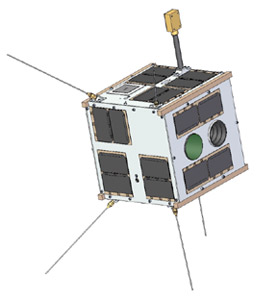Thank you very much for visiting Gunter's Space Page. I hope that this site is useful and informative for you.
If you appreciate the information provided on this site, please consider supporting my work by making a simple and secure donation via PayPal. Please help to run the website and keep everything free of charge. Thank you very much.
UniBRITE (CanX 3A)

UniBRITE (CanX 3A) [UTIAS]
CanX-3 (Canadian Advanced Nanospace eXperiments), also known as BRITE (BRIght-star Target Explorer), is a mission planned to make photometric observations of some of the brightest starts in the sky in order to examine these stars for variability. The observations will have a precision at least 10 times better than achievable using ground-based observations, and it will be packaged inside a CanX-class nanosatellite.
The Principal Investigator for the BRITE mission is Professor Anthony F. J. Moffat Département de physique, Université de Montréal. The Austrian Co-Principal Investigator is Professor Werner W. Weiss, University of Vienna.
The design is a 20 cm cube, chosen to accommodate the main telescope. It leverages a number of technologies qualified on CanX-2 and incorporates SFL's high-performance attitude control system, using reaction wheels developed in collaboration with Sinclair Interplanetary.
With the support of ETech a preliminary design for BRITE has been completed. At the present time, the components to be integrated into the science instrument are being evaluated at UTIAS/SFL; this stage of the work is supported by the Canadian Space Agency.
| Nation: | Austria, Canada |
|---|---|
| Type / Application: | Astronomy / Technology |
| Operator: | UTIAS (University of Toronto, Institute for Aerospace Studies) |
| Contractors: | UTIAS |
| Equipment: | |
| Configuration: | Gryphon Bus (GNB) |
| Propulsion: | None |
| Power: | Solar cells, batteries |
| Lifetime: | |
| Mass: | 10 kg |
| Orbit: |
| Satellite | COSPAR | Date | LS | Launch Vehicle | Remarks | |
|---|---|---|---|---|---|---|
| UniBRITE (CanX 3A) | 2013-009G | 25.02.2013 | Sr FLP | PSLV-CA | with SARAL, Sapphire, NEOSSAT, TUGsat 1 (BRITE-Austria), STRaND 1, AAUSAT 3 |
References:
Further BRITE missions:
|
